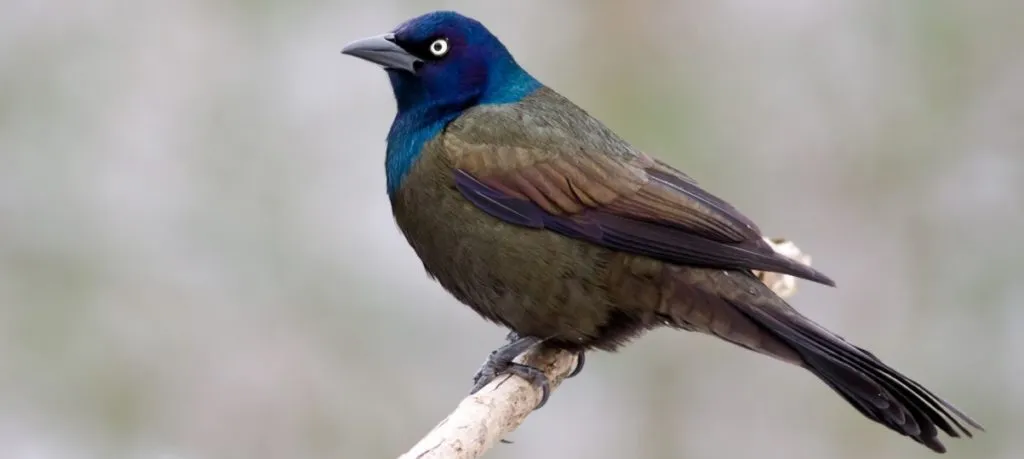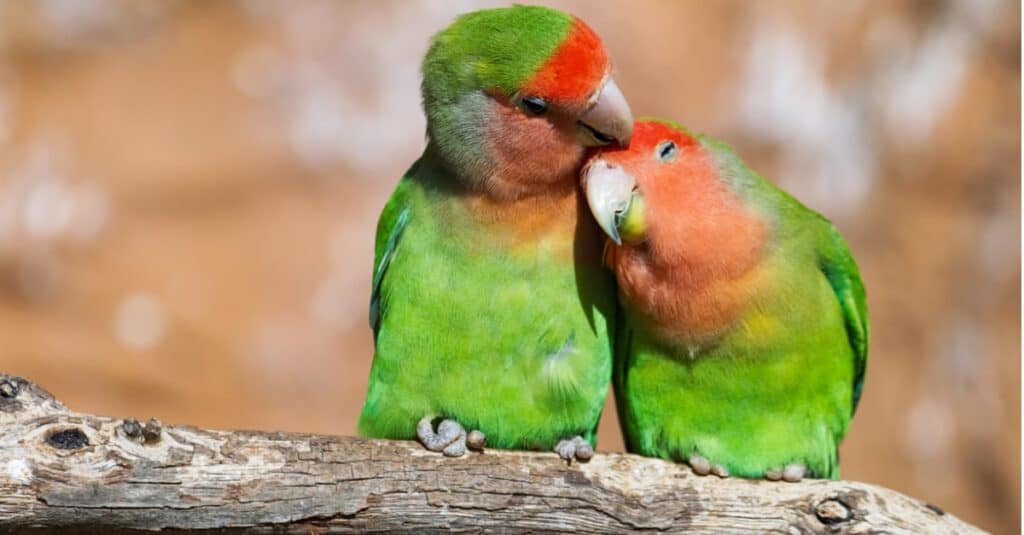Florida Birds with Long Beaks is home to an impressive array of bird species; some of the most stunning are those with long beaks. This comprehensive guide will introduce you to the 25 most beautiful types of Florida birds with long beaks, complete with identification tips and stunning pictures. Whether you’re a birdwatching enthusiast or simply curious about the diverse avian wildlife in the Sunshine State, this article has something for everyone. So, explore the fascinating world of Florida Birds with Long Beaks.
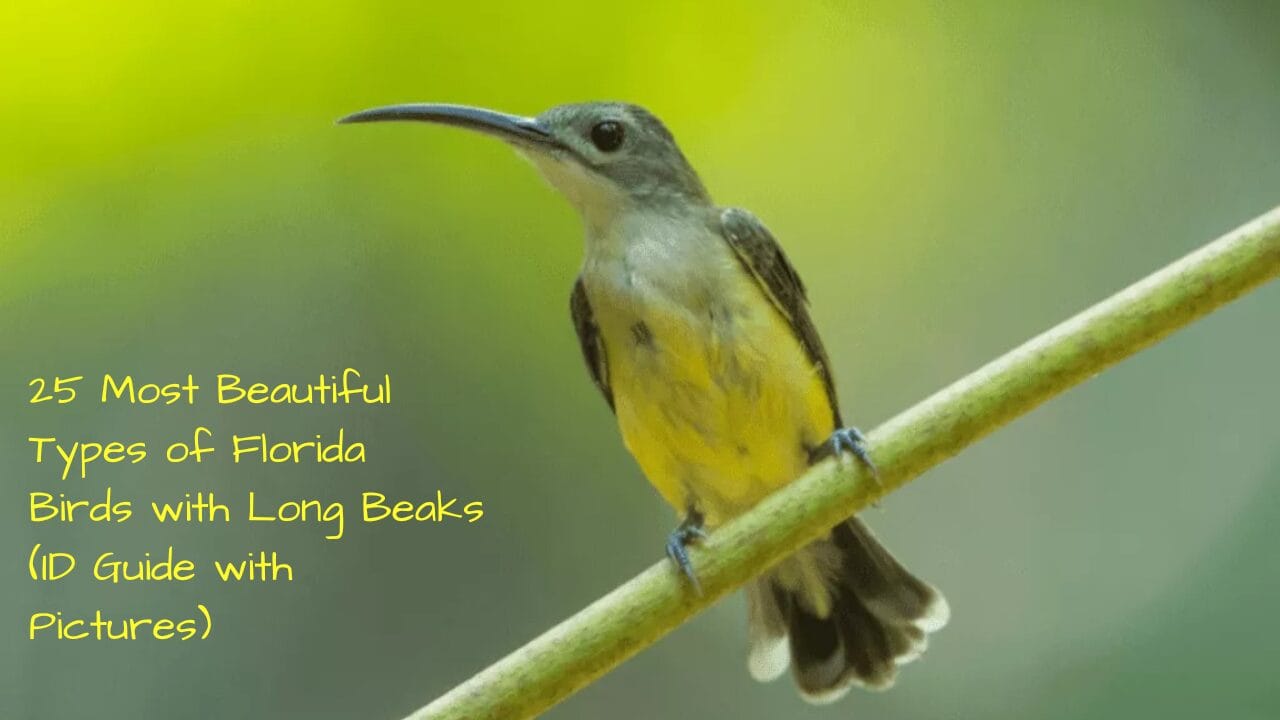
25 Most Beautiful Types of Florida Birds with Long Beaks (ID Guide with Pictures)
Florida Birds with Long Beaks
How Many Types of Florida Birds with Long Beaks?
There are 25 types of Florida birds with long beaks.
- White Ibis
- Limpkin
- Long-billed Dowitcher
- Long-billed Curlew
- Black-necked Stilt
- Willet
- Whimbrel
- American Oystercatcher
- American Avocet
- Roseate Spoonbill
- Great Egret
- Great Blue Heron
- Tricolored Heron
- Wood Stork
- Whooping Crane
- American White Pelican
- Brown Pelican
- Black Skimmer
- Ruby-throated Hummingbird
- American Flamingo
- Belted Kingfisher
- Great black-backed Gull
- Sandhill Crane
- King Rail
- Anhinga
White Ibis
The White Ibis is an eye-catching bird with its bright white plumage and long, orange beak, making them easy to identify as adults due to their distinct physical features.
Young White Ibises appear different during their first two years, sporting a chocolate brown body and pale orange beak. These birds know as florida birds with long beaks.
Though often found along the coasts of Florida, White Ibises prefer freshwater habitats when foraging for food. One might see one wading through shallow waters or searching in marshy areas; its distinctive feeding behaviour includes using its long beak to probe for insects, crustaceans, or small fish in water and soil environments.
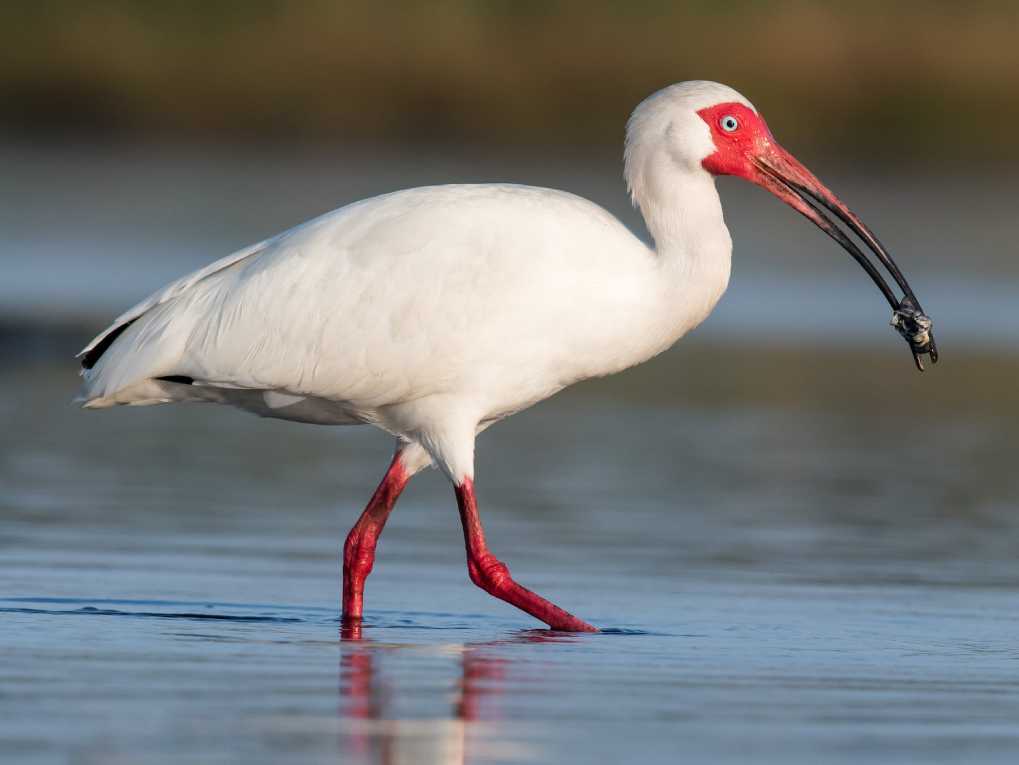
White Ibis
White Ibises are fascinating birds in Florida’s coastal and wetland environments, often foraging for food along wetlands or beaches. With their striking appearance and diverse foraging habits, these fascinating birds make up part of Florida’s ecosystems and landscape.
| Category | Information |
|---|---|
| Main Prey | Fish, Crab, Insects |
| Distinctive Feature | Rounded body and long neck and beak |
| Wingspan | 80cm – 120cm (32in – 47in) |
| Habitat | Marshes, wetlands, and swamps |
| Predators | Falcon, Hawks, Herons |
| Diet | Omnivore |
| Lifestyle | Flock |
| Favorite Food | Fish |
| Type | Bird |
| Average Clutch Size | 2 |
| Slogan | Found in swamps, marshes, and wetlands! |
| Ibis Physical Characteristics | |
| Color | Brown, Grey, Black, White |
| Skin Type | Feathers |
| Lifespan | 8 – 15 years |
| Weight | 0.3kg – 2kg (0.6lbs – 4lbs) |
| Height | 50cm – 65cm (19.7in – 25in) |
Limpkin
Limpkins are captivating wading birds known for their large bodies and thick necks, often reaching three pounds in weight. Males generally outweigh females, but both sexes share similar appearances, often sporting white spots or streaks on their heads and necks.
Limpkin are found throughout Florida all year-round and often inhabit wetland habitats, making them an integral component of Florida’s diverse ecosystem.
One of the most striking characteristics of the Limpkin is its long and heavy beak. This yellowish-hued beak with darker tips provides the Limpkin with everything it needs for its diet of predominantly marine organisms.
Limpkins have beaks that are slightly open at the tip, enabling them to capture and consume prey quickly and efficiently. Their thick beak is used for expertly prying open bivalves such as mussels. This feeding behaviour sets Limpkins apart from other birds by showing their adaptability in meeting environmental challenges.These birds know as florida birds with long beaks.
Whenever they sense danger or feel threatened, limpkins develop an extraordinary defensive posture to ensure their habitat survival. This remarkable adaptation ensures their protection and survival in their environment by raising their heads high and appearing larger and more intimidating.
Limpkins play an invaluable role in Florida’s wetlands ecosystems by contributing their presence and behaviour towards maintaining diversity and ecological equilibrium.
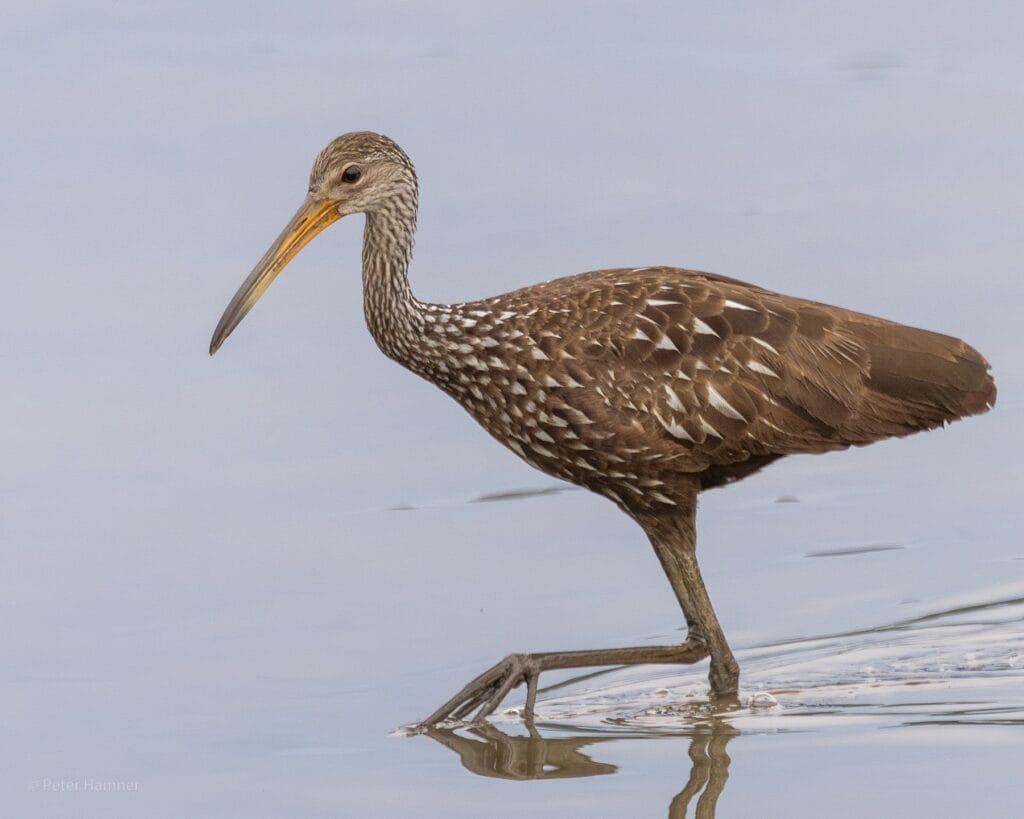
Limpkin
Limpkins are captivating birds to observe because of their distinctive features and behaviour; whether you’re an avid bird enthusiast or simply appreciate nature – seeing one will leave an indelible mark!
Long-billed Dowitcher
The Long-billed Dowitcher is a migratory bird commonly seen in Florida during winter. This species often co-occurs with its close relative, the Short-billed Dowitcher.
Though they may appear similar, Long-billed Dowitchers can be distinguished from Short-billed Dowitchers by their slightly larger size and longer bills. While Short-billed Dowitchers breed in Florida, Long-billed Dowitchers prefer nesting in Arctic tundra areas.
Long-billed Dowitcher birds travel long distances each year to their wintering grounds, which span various coastal regions in Florida. Boasting its unique long bill and slim profile, the Long-billed Dowitcher presents an intriguing sight for birdwatchers and nature enthusiasts.

Long-billed Dowitcher
Observing these magnificent birds in their winter habitat provides a remarkable opportunity to gain more insights into their behaviour and appreciate their incredible migration journey.
Long-billed Curlew
The Long-billed Curlew is an intriguing bird species found across both northwestern United States grasslands and Florida during winter months. Recognizable by its distinctive long, downturned beak and large size, this bird can easily be identified when out and about.
As one of Florida’s largest shorebirds, its distinctiveness is amplified.
These magnificent birds can be found throughout coastal environments, from mudflats, beaches, estuaries and flooded areas to estuaries and estuarine systems. Here, they use their long bills to explore the ground in search of invertebrates, such as worms that comprise an essential diet component.
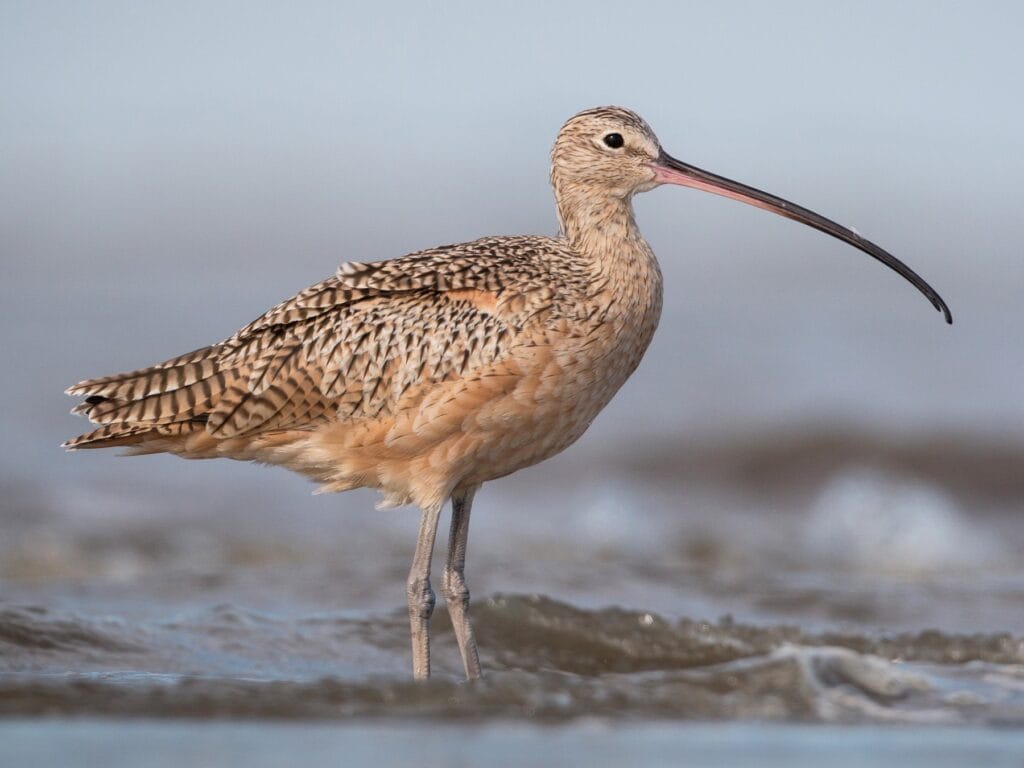
Long-billed Curlew
Long-billed Curlews never fail to charm with their stunning bill and unique presence, whether breeding in the grasslands of the Northwest or migrating south during Florida winters. Their ability to adapt to various habitats and their striking appearance make this bird truly remarkable in the bird world.
Black-necked Stilt
The Black-necked Stilt is an extraordinary wading bird easily distinguished by its striking black-and-white feathers, long reddish-pink legs, and thin beak. At over 9 inches long, its legs have the longest proportional leg span among all bird species.
Florida shorebirds such as this shorebird can be found year-round. Their preferred breeding environment is shallow marshes; however, during the winter season, they can often be found along the coastline.
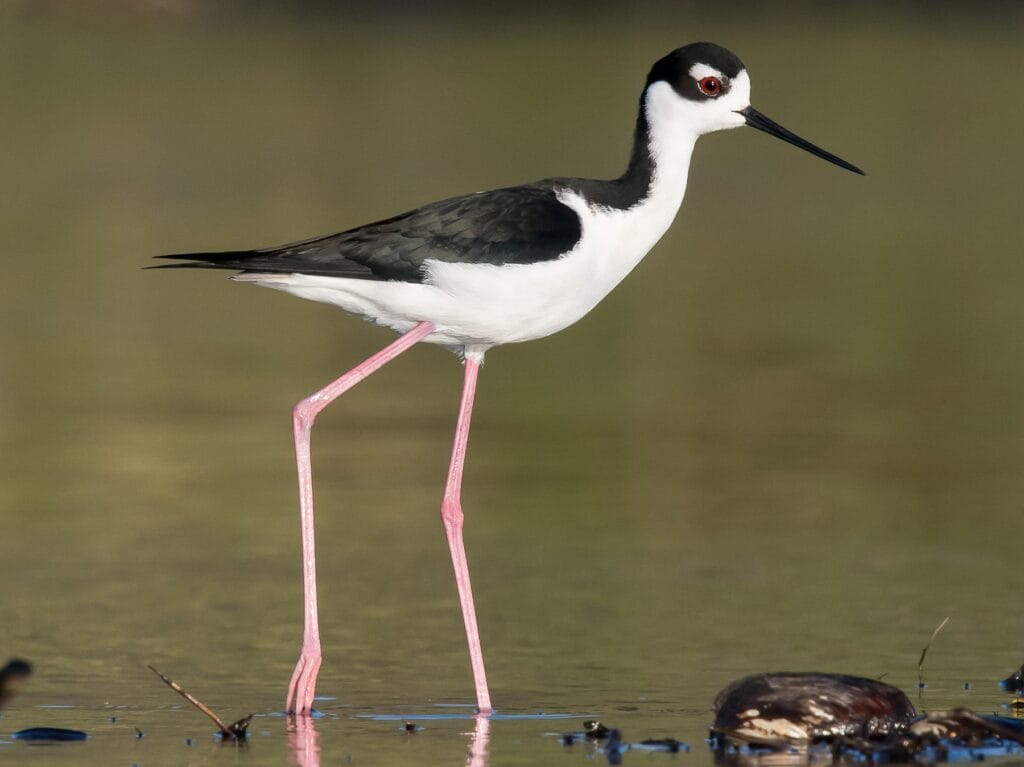
Black-necked Stilt
Black-Necked Stilts are beloved birdwatching favourites and nature enthusiasts, often seen flying overhead as birdwatchers hunt for sightings. Their elegant appearance, striking plumage, and graceful gait make this bird stand out among other avian species.
Willet
The Willet is a medium-sized wading bird found across Florida during winter and year-round breeding in northern regions of the state. Preferring saltwater habitats, this beach bird displays its distinctive brown upper side with a white underside.
Willets can be distinguished from other seabirds by their distinctive black-and-white wing markings when in flight, as they display them during foraging along the ocean shore. Feeding on aquatic insects, worms, crabs, and other invertebrates.
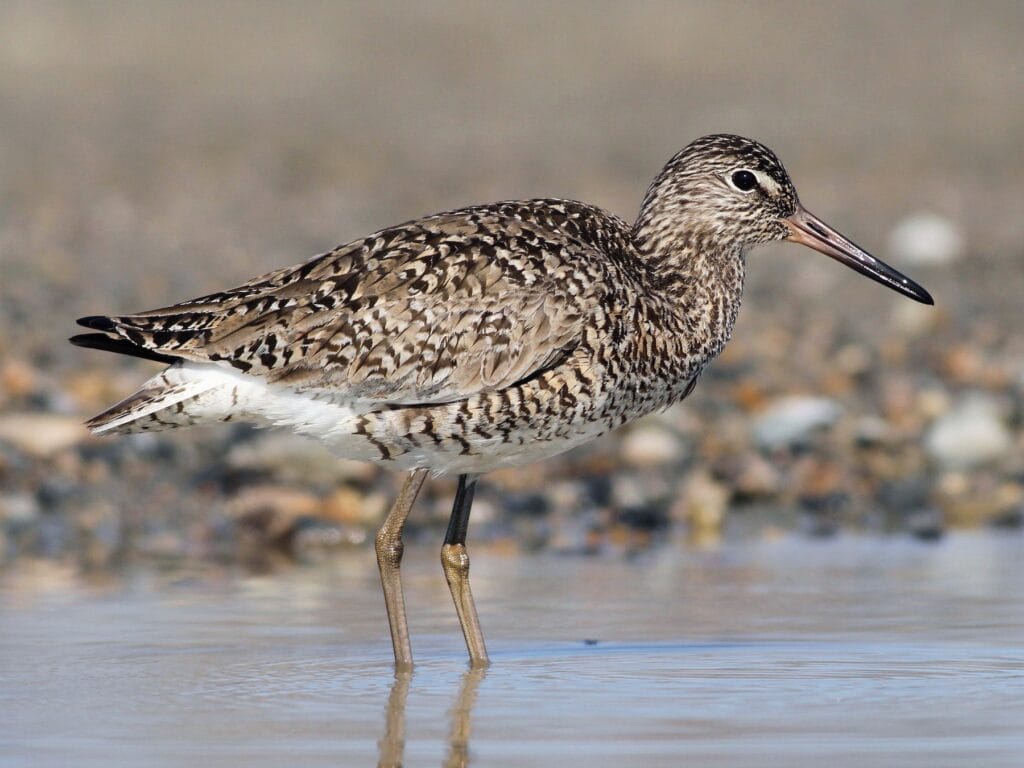
Willet
Willets are beloved members of Florida’s diverse bird population. With their striking appearance and coastal lifestyle, these striking birds form an integral part of Florida’s ecosystem.
Whimbrel
The Whimbrel is an impressive wading bird known for its distinctive appearance and behaviour. Characterized by its long downturned beak and shorter body size compared to Curlews, its appearance may resemble that of Curlews; however, Wombrels tend to be smaller, with slightly shorter beaks and longer bills than their cousins.
While these birds typically breed in the Arctic tundra, they have been seen along Florida’s coastline as rare winter visitors. These birds tend to frequent mudflats, tidal estuaries, and salt marshes where their main food source lies: small crabs and other crustaceans.
Whimbrels have long been beloved birds of nature enthusiasts and birders. Their elegant yet powerful presence captures everyone’s interest, while their ability to adapt to various environments and unique feeding habits make them fascinating species to study and observe.
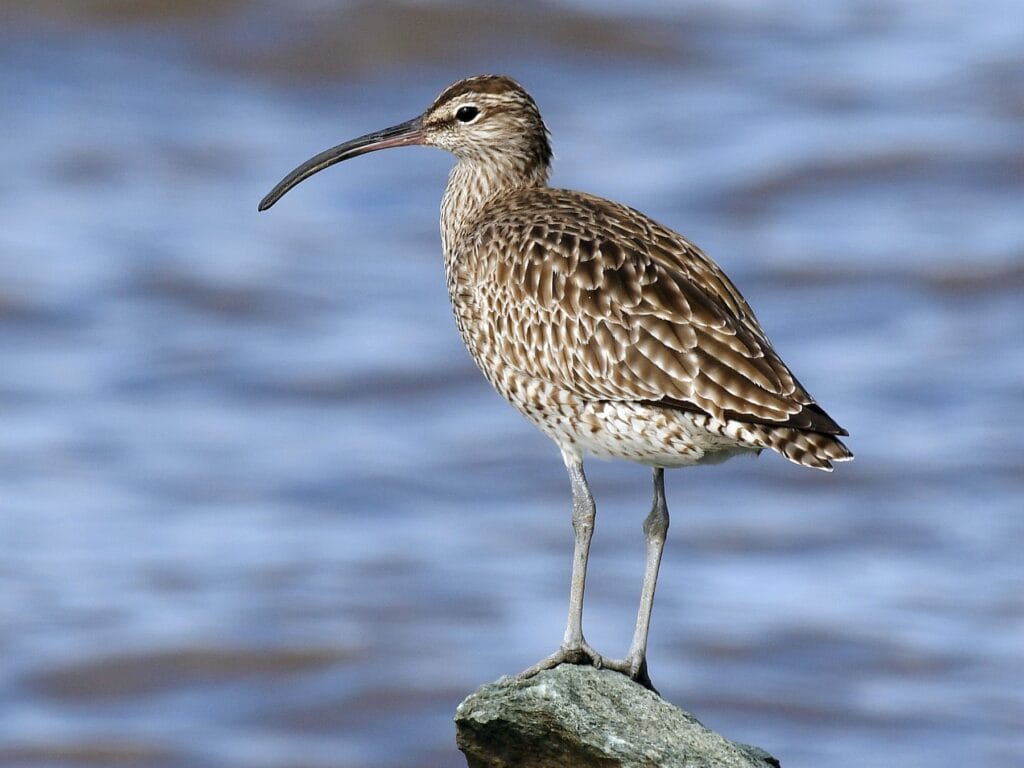
Whimbrel
Overall, the Whimbrel is an integral member of wading bird communities, adding to biodiversity in its natural environments and inspiring curiosity about its vast life forms.
American OystercatcherC
The American oystercatcher is an attractive bird species found along Atlantic and Gulf coastlines, known for its distinctive black head and breast feathers, greyish-brown back, tail, wings, and white underparts – as well as stunning yellow eyes encircled with vibrant orange eye rings – adding further appeal.
American oystercatchers can be distinguished from one another by their long and bright orange beak, measuring 3 inches long and with sharpened ends like razor blades. This beak is integral to their survival as it helps them pry open oysters for sustenance – hence their namesake of “oystercatcher”.
American oystercatchers are beautiful seabirds that play an essential role in coastal ecosystems. By striking an equilibrium in their predator-prey relationships, American oystercatchers help sustain the vitality of their habitat and serve as a reminder of the complex relationships woven throughout nature. Their presence serves both delight and insight into this connection-rich universe we inhabit.

American OystercatcherC
The American Oystercatcher is an essential species in coastal ecosystems, helping control populations of mussels, clams and other shellfish species. With its remarkable adaptability and striking appearance, this bird is a striking addition to any beach or coastal environment.
American Avocet
The American Avocet is an exquisite bird found throughout North America’s aquatic environments. These elegant birds migrate in large flocks of 30 to 500 individuals to breed in various habitats such as marshes, beaches, prairie ponds and shallow lakes in central and western US as well as parts of Canada.
One of the most striking characteristics of American Avocets is their striking appearance. Bored-colored heads and necks, black bodies with white underparts, bluish-gray legs that stand out when walking through water and wings featuring large white patches all contribute to making these birds unforgettable.
American Avocets are famously distinguished by their remarkable beak, which features long, black feathers with slight upcurvature near its tips. Although its exact measurement remains unknown, its approximate width approximates twice that of their small, round heads.
These elegant birds are a pleasure to observe and add an eye-catching charm to any wetland or shoreline they inhabit. No matter your level of bird appreciation, or simply admire nature’s wonders, don’t miss the American Avocet as one of its species that should not be missed!
One of the unique characteristics of an American Avocet is its long, thin beak that it uses to capture aquatic insects. When feeding, this bird will submerge itself underwater before moving its beak from side to side to stir up water currents and dislodge any insects hiding there – an impressive display.
American Avocets are omnivorous birds with a diet consisting of fish, aquatic insects, seeds and crustaceans. These skilled hunters utilize their beaks to catch prey before feeding in shallow areas near their habitat.
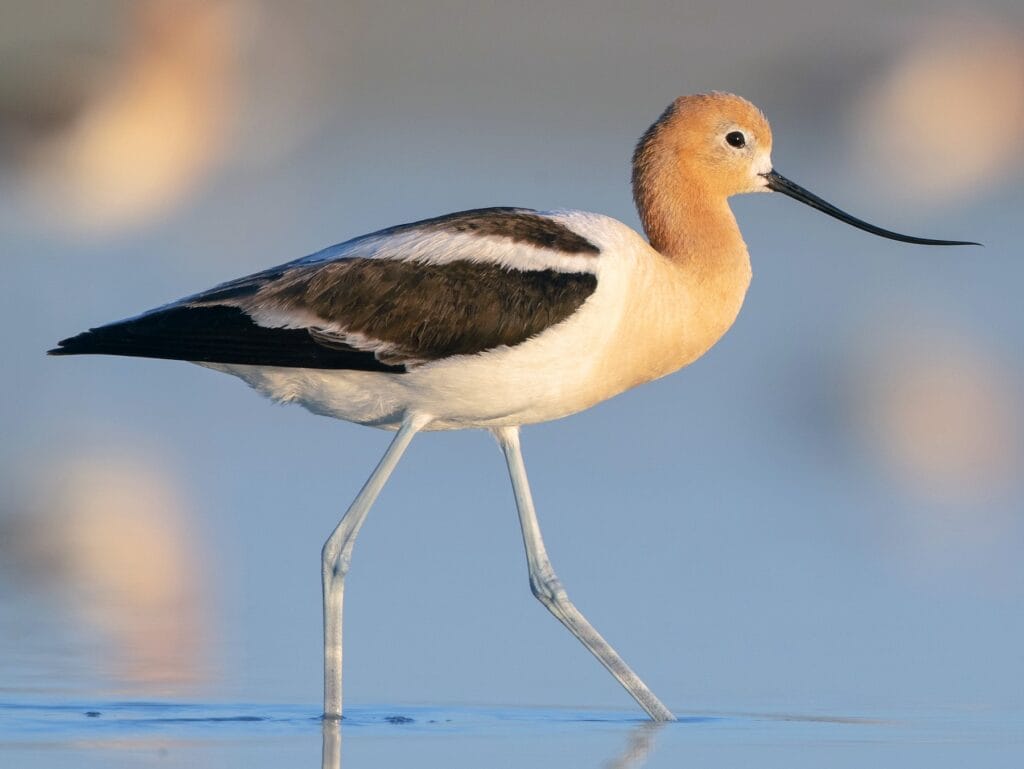
American Avocet
If you find yourself near the coastal regions of Florida during wintertime, keep your eye out for the striking American Avocet. Their graceful movements and unique feeding habits offer wildlife enthusiasts and birdwatchers alike an unforgettable experience that they won’t want to miss.
| Category | Classification |
|---|---|
| Kingdom | Animalia |
| Phylum | Chordata |
| Class | Aves |
| Order | Charadriiformes |
| Family | Recurvirostridae |
| Genus | Recurvirostra |
| Scientific Name | Recurvirostra |
| Avocet Locations | Asia, Eurasia, Europe, North America, Oceania, South America |
Roseate Spoonbill
The Roseate Spoonbill is not only a visual treat; it is also an important member of the ecosystem, playing a valuable role in maintaining the balance of wetland habitats. These enormous birds are an absolute delight to observe and are often found in groups, creating a magnificent spectacle against the backdrop of their wetland homes.
As carnivores, their diet consists of a variety of tasty treats, including crustaceans, aquatic insects, frogs, newts, and small fish.
Breeding season for Roseate Spoonbills in Southern Florida typically occurs from November to December, while in Central Florida, it usually takes place around April. These birds create a magnificent spectacle during this period, enhancing the already breathtaking scenery of the region.
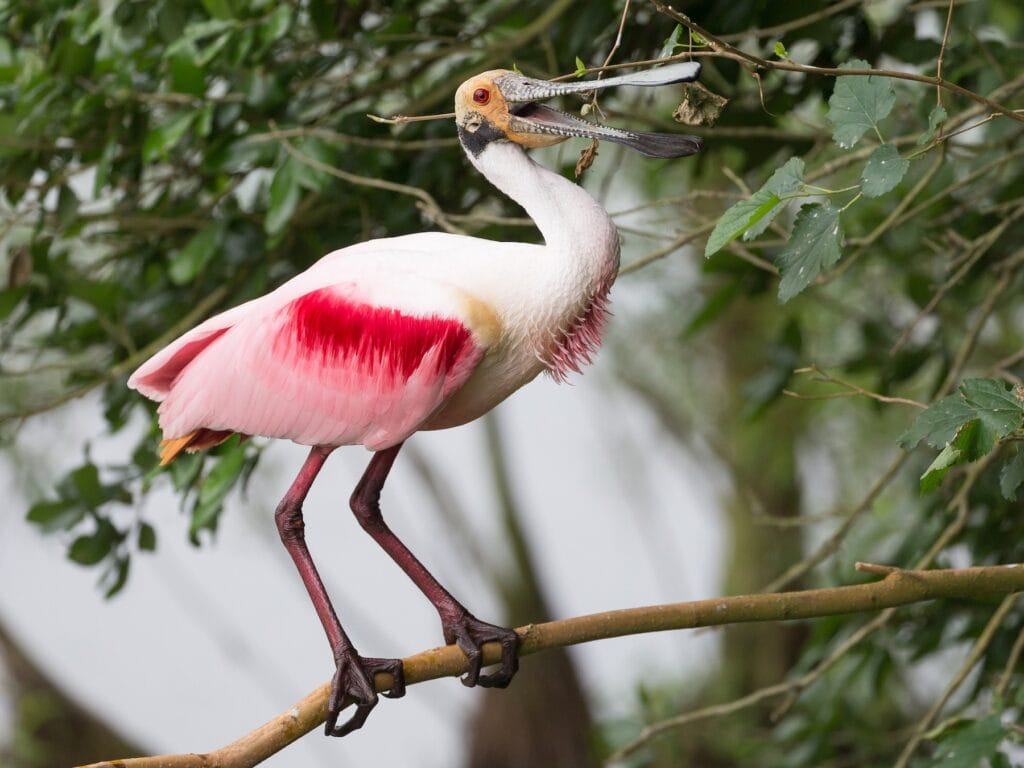
Roseate Spoonbill
So, whether you are a bird enthusiast or simply appreciate the wonders of nature, make sure to witness the beauty and grace of the Roseate Spoonbill during your visit to Southern Florida.
| Category | Classification |
|---|---|
| Kingdom | Animalia |
| Phylum | Chordata |
| Class | Aves |
| Order | Ciconiiformes |
| Family | Threskiornithidae |
| Genus | Ajaja |
| Scientific Name | Ajaja ajaja |
| Roseate Spoonbill Locations | Central America, North America, South America |
Great Egret
Once on the brink of extinction due to the demand for their plumes as hat decorations, Great Egrets have made a remarkable recovery thanks to laws and conservation efforts.
With their long necks and slender bodies, Great Egrets possess a certain elegance reminiscent of pelicans. Interestingly, they can tuck their necks right into their backs during flight, adding to their aerodynamic abilities.
Great Egrets exhibit seasonal monogamy, meaning they stay with the same partner for one breeding season. These birds prefer to breed in colonies, often in trees that are in close proximity to large lakes. Their breeding behaviour creates a captivating spectacle, drawing many admirers.
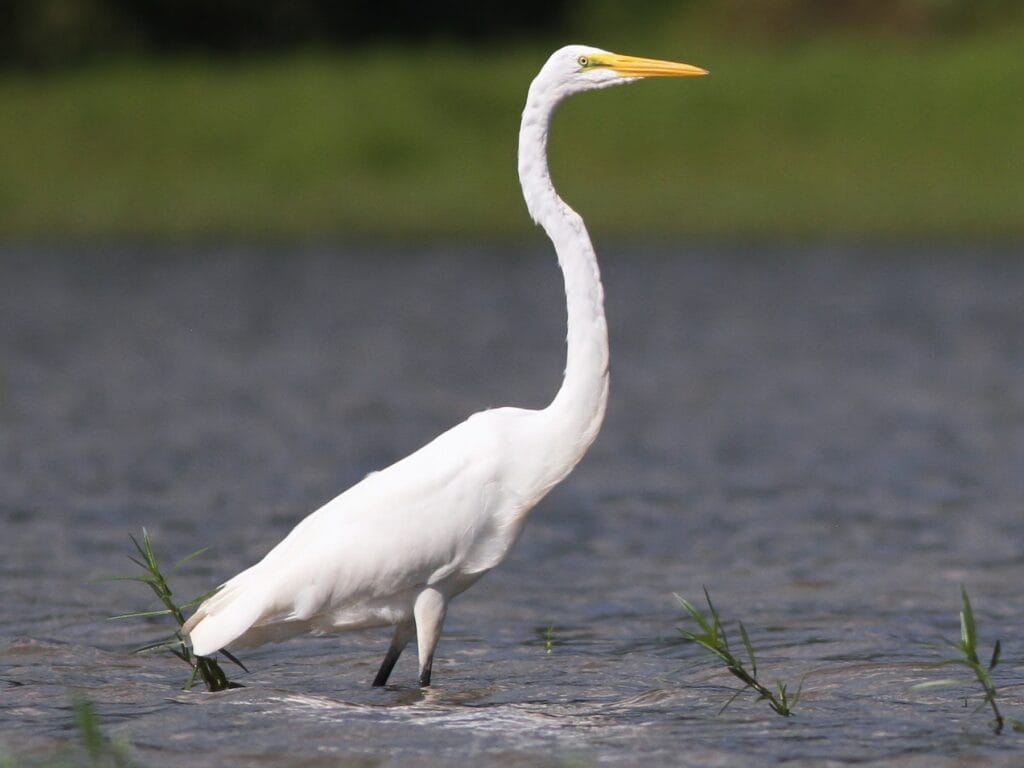
Great Egret
Whether you are interested in learning about their conservation success or their unique breeding habits, this category will provide you with fascinating insights into the captivating world of Great Egrets.
| Category | Classification |
|---|---|
| Kingdom | Animalia |
| Phylum | Chordata |
| Class | Aves |
| Order | Pelecaniformes |
| Family | Ardeidae |
| Genus | Ardea |
| Scientific Name | Ardea alba |
| Great Egret Locations | Africa, Asia, Europe, Oceania |
Great Blue Heron
The Great Blue Heron (Ardea Herodias) is an impressive and majestic bird. As the largest species in North America and one of Florida’s largest birds, this magnificent species stands out with its signature blue-grey plumage with short black plumes on its head and black and chestnut patterns on its shoulders – truly making an impressionful statement about Florida!
One of the most remarkable characteristics of the Great Blue Heron is its distinct flight style: when flying, its long neck forms an elegant S-shape with legs trailing behind. Furthermore, its beautiful appearance includes its long yellowish beak, which measures from 4.4 to 7 inches and turns orange at the start of the breeding season.
Herons are known for their sharp bills and are adept at capturing and eating a wide range of prey, such as fish, amphibians, and reptiles. They can often be found near bodies of water such as rivers, lakes, or marshes, where they wait patiently before striking with precision to capture their prey.
If you visit South Florida and the Florida Keys, you might just stumble across an all-white subspecies known as the Great White Heron – rare indeed!
Great Blue Herons are captivating birds to observe for their courtship rituals. Prior to mating, Great Blue Herons engage in locking and rubbing their bills against each other’s feathers before mating – creating an intimate yet beautiful display. Although monogamous for only one breeding season, both parents share incubating duties, showing strong cooperation and dedication between themselves and one another.
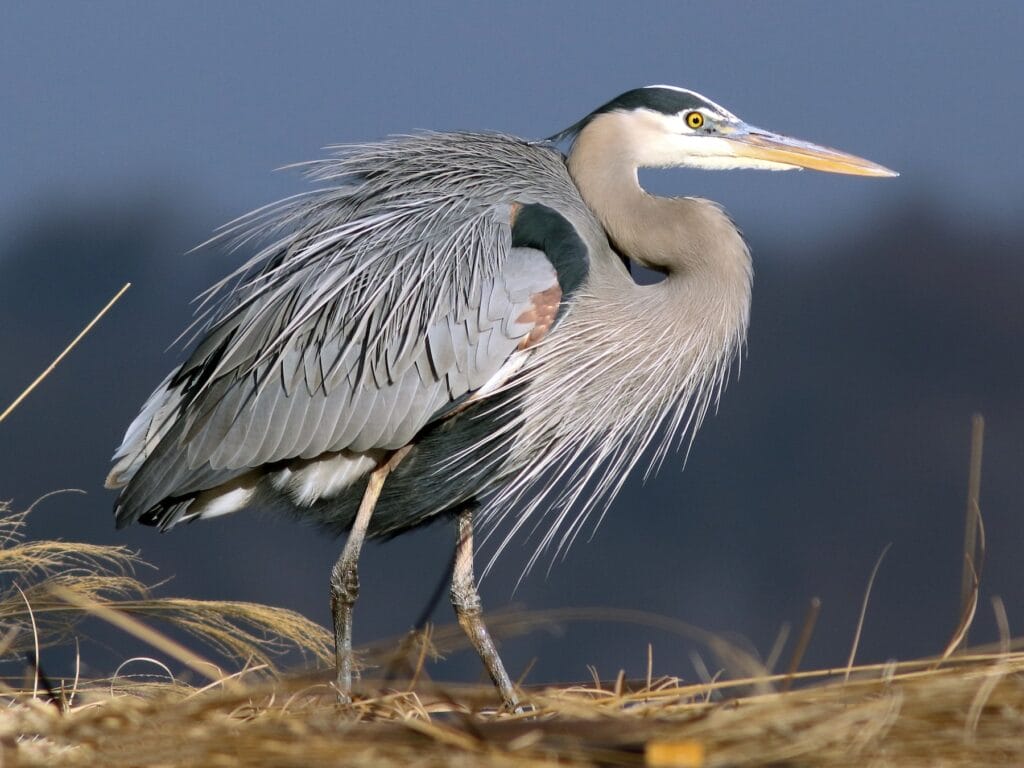
Great Blue Heron
No matter your interest in nature or birds, witnessing a Great Blue Heron in its natural habitat is truly remarkable. From its elegant appearance and captivating behaviour to its royal status and impressive hunting capabilities, the Great Blue Heron mesmerizes both bird enthusiasts and casual observers alike.
| Category | Classification |
|---|---|
| Kingdom | Animalia |
| Phylum | Chordata |
| Class | Aves |
| Order | Pelecaniformes |
| Family | Ardeidae |
| Genus | Ardea |
| Scientific Name | Ardea herodias |
| Great Blue Heron Locations | Central America, North America, South America |
Tricolored Heron
Tricoloured Herons are medium-sized wading birds with an impressive appearance and behaviour. Formerly known as Louisiana Herons, they feature stunning blue-grey upper parts with white bellies – creating an alluring combination.
This stunning bird is a popular breeder in Florida, often breeding near estuaries or saltwater marshes along the Gulf Coast.
Tricoloured Herons display social behaviour by nesting in colonies with other heron species; however, they prefer foraging alone and are known for their territorial behaviour – they aggressively protect their feeding grounds against intruders.
Tricoloured Herons are captivating sights in the wetland habitats they occupy, where their graceful movements as they patiently hunt their prey are captivating to watch. Tricoloured Herons are highly adaptable creatures, living in both coastal and freshwater environments, where they feed off an assortment of small fish, crustaceans, and insects for sustenance.
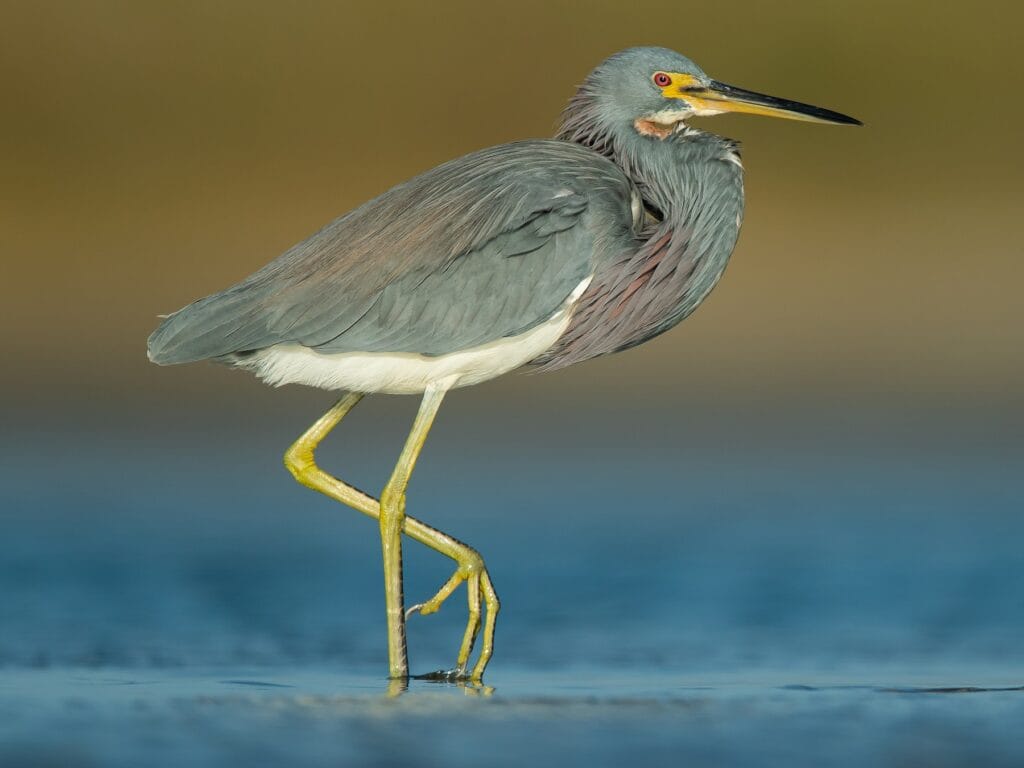
Tricolored Heron
Their beautiful plumage and engaging behaviour make them a pleasure to encounter in North American wetlands. These birds know as florida birds with long beaks.
| Category | Classification |
|---|---|
| Kingdom | Animalia |
| Phylum | Chordata |
| Class | Aves |
| Order | Ciconiiformes |
| Family | Ardeidae |
| Heron Locations | Africa, Asia, Central America, Eurasia, Europe, North America, Oceania, South America |
Wood Stork
Wood Storks are stunning birds that can easily be identified with their distinctive features and size similar to Great Egrets, such as their distinctive beak curve. Unfortunately, their numbers have been rapidly declining over the last decades – reflecting an alarming trend seen with many wading bird species.
Wood Storks are large birds with an entirely white body and black head, distinguished by a slightly downward-curving bill and black bill that stand out against others such as White Ibis or Egrets. When flying, their black tail and wing tips add to their striking appearance and complete their striking appearance.
This majestic bird can be found throughout Americas from wetlands to marshes; from the southeast United States to Argentina. Distinguished for its ability to wade in shallow waters using its special bill to catch small fish, amphibians, and crustaceans in shallower depths. As one of the top predators, Wood Storks play an essential role in controlling aquatic populations by helping maintain balance in ecosystems.
Wood Storks are remarkable birds that thrive off feeding on amphibians, fish and aquatic invertebrates – particularly frogs! This majestic creature prefers nesting colonies close to their foraging grounds where old trees provide safety while contributing to social dynamics within its community.
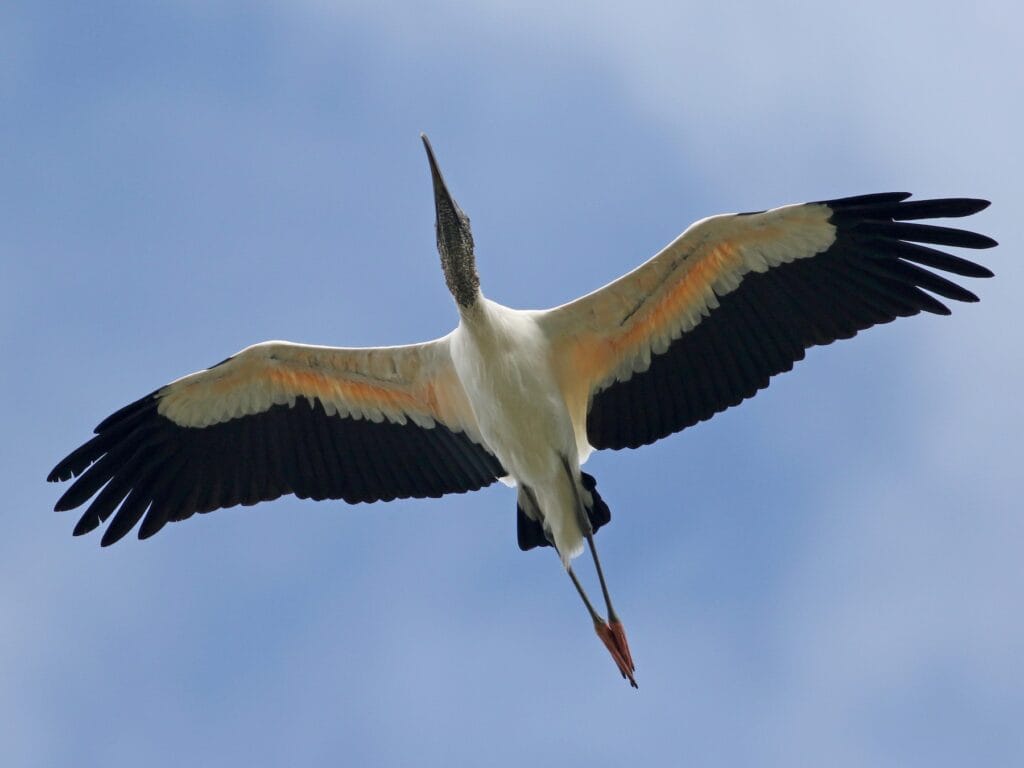
Wood Stork
The Wood Stork’s declining numbers serve as a stark reminder of the environmental challenges many species are currently facing. Conserving their habitat and protecting foraging areas are crucial steps toward ensuring its survival and protecting other vulnerable wading birds like it.By understanding and appreciating its remarkable characteristics, we can work toward protecting its environment as well.
Whooping Crane
The Whooping Crane is an iconic North American bird known for its spectacular flight. Being the tallest species found here, along with sandhill cranes, this Whooping Crane stands as Florida’s tallest bird. Famed for their incredible height, ranging between 4 feet 1 inch to 5 feet 3 inches tall, their whooping call has long been heard across Florida and is truly an impressive sight to behold.These birds know as florida birds with long beaks.
These beautiful birds boast snowy white plumage, beautiful crimson caps and striking black wings that become increasingly noticeable as they take flight. Adorned with long, dark and pointed beaks adorned with long barbels for probing ground conditions or searching for food sources, Whooping Cranes have an exceptional tool for probing ground surfaces and hunting food sources.
Unfortunately, this remarkable species is critically endangered, with only approximately 800 birds remaining in the wild. Conservation efforts must be prioritized to safeguard its future and ensure its survival for future generations; observation and protection of habitat, as well as raising awareness, are all integral parts of protecting Whooping Crane populations and reversing any population declines.
These elegant creatures can often be found around wetland areas, where they feed on crabs, clams, frogs and aquatic plants for sustenance.
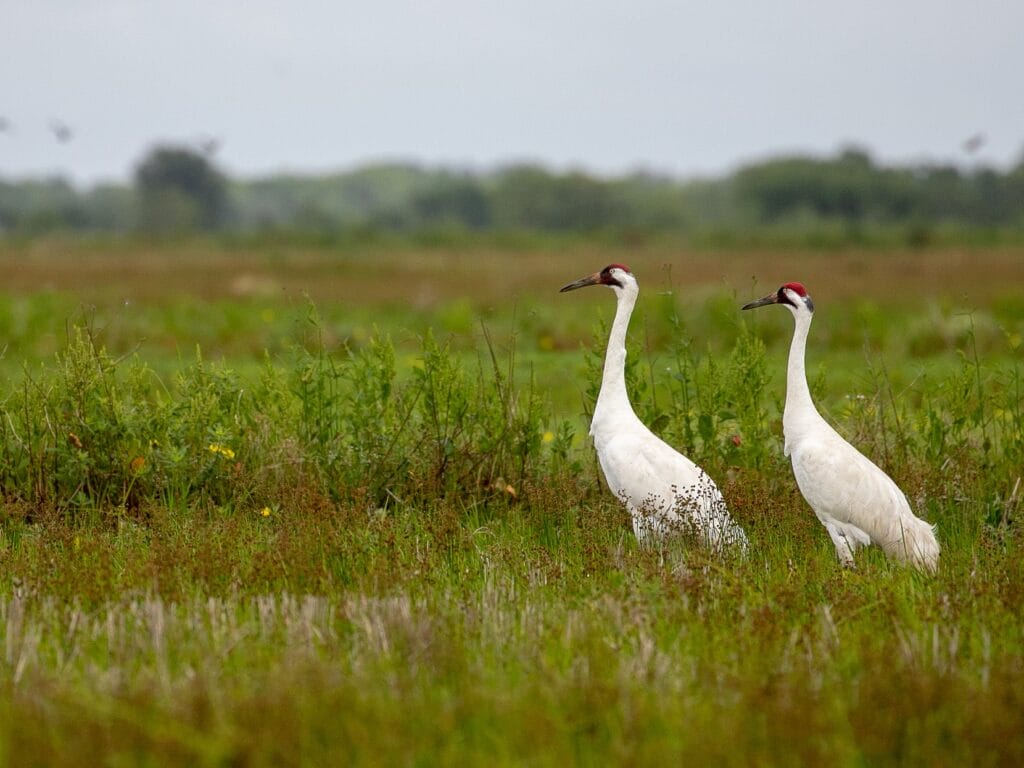
Whooping Crane
Whooping Cranes are well known for their distinctive vocalizations. During courtship, Whooping Cranes engage in “unison calls”, creating a harmonious display of affection. Additionally, when feeling alarmed, they emit loud yet brief bugle calls that last less than one second each.
| Category | Classification |
|---|---|
| Kingdom | Animalia |
| Phylum | Chordata |
| Class | Aves |
| Order | Gruiformes |
| Family | Gruidae |
| Genus | Grus |
| Scientific Name | Grus americana |
| Whooping Crane Locations | North America |
American White Pelican
The American White Pelican is an impressive bird found across Florida and beyond, known for their striking all-white plumage with black flight feathers that make it easy to identify. Boasting an astounding wingspan of 9.85 feet and weighing as much as 30 pounds, they make for a captivating sight.
One of the American White Pelican’s most distinguishing characteristics is their distinctively long beak – one of the longest among North American waterbirds. Male pelicans sport vibrant yellow-orange beaks measuring between 11.3 and 15.2 inches, while females typically possess shorter ones between 10.3 and 14.2 inches. One of its most intriguing aspects is its captivating feeding behaviour. These birds know as florida birds with long beaks.
Underneath their beaks, pelicans possess enormous throat sacs, which they use to filter food from the water and feed themselves, enabling them to scoop up large quantities of fish and aquatic organisms easily and with ease. Their beaks are typically flat on top and may feature distinctive “horns” on their upper mandibles – an extraordinary species such as the American White Pelican never fails to amaze observers with its sheer size and distinctive beak structure.
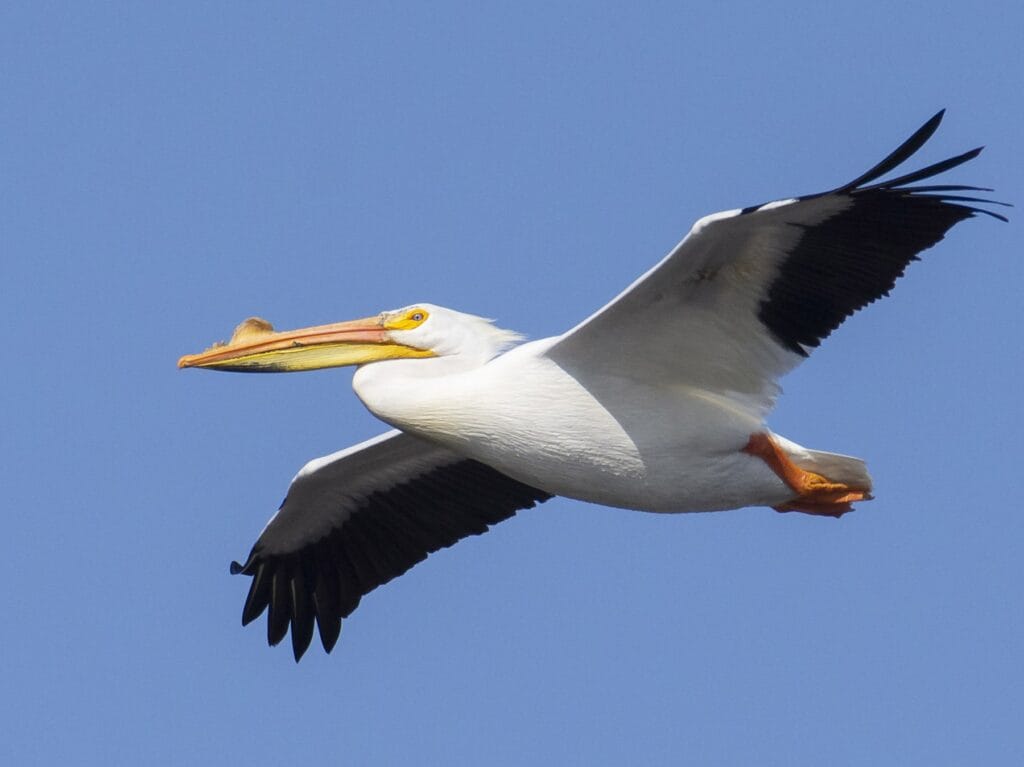
American White Pelican
American White Pelicans, unlike their brown counterparts, are migratory birds that travel between Florida and Canada to breed each summer. Starting as early as September and lasting through March, they arrive and remain until March, when large groups can be seen congregating along coastlines and inland waters of Florida. When breeding season arrives again in July-August, they travel north.Fish is their main diet; however, they also feed on crayfish and salamanders. The American White Pelican is an exceptional species that perfectly inhabits aquatic environments.
| Category | Classification |
|---|---|
| Kingdom | Animalia |
| Phylum | Chordata |
| Class | Aves |
| Order | Pelecaniformes |
| Family | Pelecanidae |
| Genus | Pelecanus |
| Category | Information |
|---|---|
| Main Prey | Fish, Crabs, Turtles |
| Fun Fact | Can have a wingspan of up to 3 meters! |
| Distinctive Feature | Pouch hanging from underside of beak and keen eyesight |
| Wingspan | 183cm – 350cm (72in – 138in) |
| Habitat | Arid islands and coastal waters |
| Predators | Human, Cat, Coyote |
| Diet | Omnivore |
| Lifestyle | Flock |
| Favorite Food | Fish |
| Type | Bird |
| Average Clutch Size | 6 |
| Slogan | Can have a wingspan of up to 3 meters! |
| Nesting Location | Ground or tree, depending on the species |
| Pelican Physical Characteristics | |
| Color | Grey, Black, White |
| Skin Type | Feathers |
| Top Speed | 40 mph |
| Lifespan | 16 – 23 years |
| Weight | 2.7kg – 15kg (6lbs – 33lbs) |
| Height | 106cm – 183cm (42in – 72in) |
Brown Pelican
The Brown Pelican is an impressive sight along Florida’s shores, where its majestic flight can often be heard and seen silently gliding up and down the coastline. These distinctive birds can often be recognized by their large size, graceful flight, distinctive neck colouration of chestnut-and-white with white heads featuring pale yellow crowns, brown-streaked backs, rumps and tails, making them easy to identify.
Brown Pelicans, Florida’s second-largest species of pelican, make an imposing sight. Boasting black legs and feet with grey beaks measuring 11-13.7 inches long – essential tools in their hunt for fish by diving headfirst into water bodies – Brown Pelicans command respect wherever they appear.
One of their most impressive talents is using their pouches to capture fish for sustenance and cool down as water evaporates off of their skin surface to provide a soothing sensation.
Brown Pelicans are beautiful to observe and also play an integral part in ecosystem health. As indicator species, their presence or absence can provide insight into coastal ecosystem health. Furthermore, these birds are highly responsive to environmental changes such as pollution and habitat loss; thus, they are highly vulnerable.
Overall, the Brown Pelican has become an iconic symbol of Florida’s coastal beauty and charms both residents and visitors with its impressive presence and individual characteristics.
While seabirds have become common sights along Florida’s coastal regions, they weren’t always so. Their nesting seasons vary by region in Florida – South Florida tends to see it in late fall, while central and northern areas typically experience it in early spring.
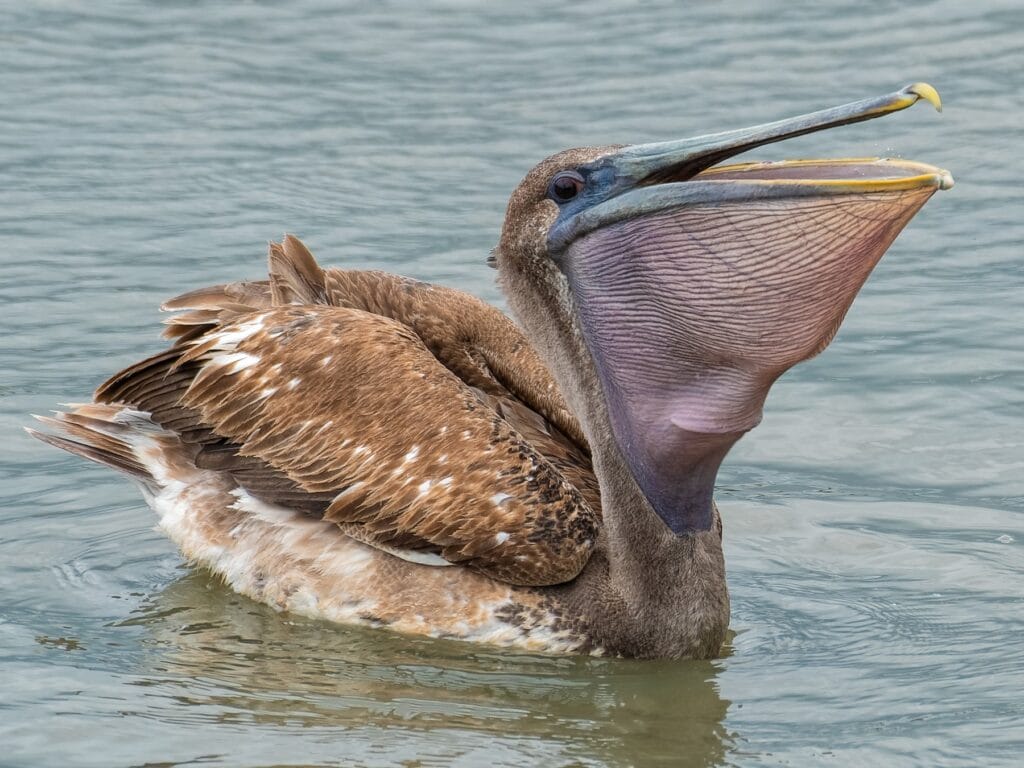
Brown Pelican
Brown Pelicans display monogamous behaviour during nesting season, remaining loyal to one partner throughout. Together, these devoted pairs build nests either on the ground or in trees – adding their stunning appearance and charismatic personalities to Florida’s coastal ecosystems.These birds know as florida birds with long beaks.
Black Skimmer
The Black Skimmer is an intriguing seabird known for its distinct appearance and effective fishing techniques. Boasting black upperparts, white underparts, dark brown eyes, and red legs, these birds are easily recognisable during breeding season with black upperparts, white underparts, dark brown eyes, red legs and easily recognisable markings on their wings and body; during nonbreeding season their plumage becomes browner adding versatility and adaptability.
Black Skimmers, as the largest among the three species of skimmer fishes, can grow to be 1 foot 8 inches in length. One of their most distinguishing features is their large red and black beaks – distinguished by wide top edges tapering towards their tips with the lower mandible being longer than its counterpart – enabling these skimmers to effortlessly skim across water surfaces whilst quickly scooping up small fish as they go.
Black skimmers are agile hunters who rely on keen eyesight and expert fishing skills to survive in coastal areas, estuaries and lagoons where there are abundant fish stocks. Keep an eye out for these remarkable birds; watching them at work is truly impressive! The Black Skimmer can be found throughout Florida as permanent residents, easily identified by its characteristic “kak-kak” call. They breed between May and September in large colonies comprising hundreds of pairs, with both parents incubating 3-5 eggs at the same time.
Black Skimmers are predatory creatures that feed on small fish, insects, crustaceans and molluscs. Usually found near estuaries, beaches or sandbars where they hunt their prey – typically, small fish like herring and shrimp are favourite targets of attack! These agile birds are well known for their unique feeding technique – flying low over water with lower mandible skimming the surface allows them to catch prey quickly and efficiently quickly.
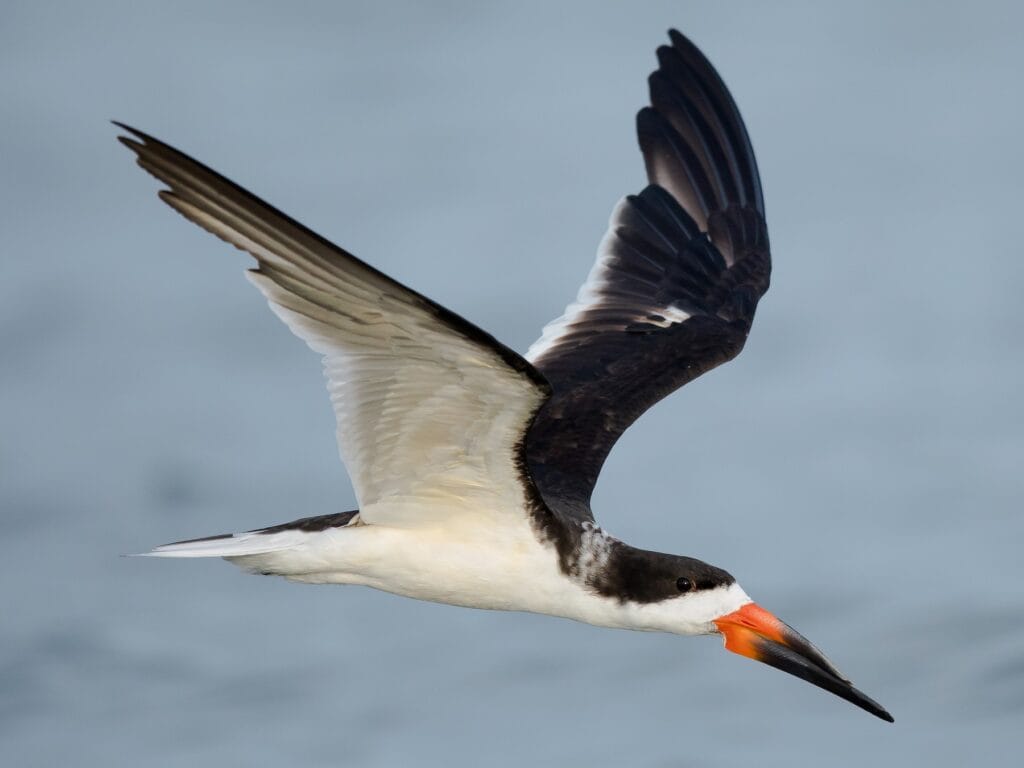
Black Skimmer
The Black Skimmer is an impressive bird species that plays a vital role in Florida’s diverse coastal ecosystems. Their presence adds beauty and diversity, captivating residents as well as visitors alike.
Ruby-throated Hummingbird
The Ruby-throated Hummingbird is an exquisite species of tiny green birds found throughout Florida and beyond, known for being among the smallest and most common hummingbird species there. Males display sexual dimorphism with metallic emerald green upperparts, greyish-white underparts, black wings and an exquisite ruby-red throat patch known as a gorget; their forked tails add further charm. Females, on the other hand, tend to be larger with white throats.
These tiny hummingbirds measure only 2.8-3.5 inches in body length and possess long and narrow beaks that allow them to sip nectar deep within flowers for sustenance. Their nectar source plays an essential role in their survival.
Even though these birds are small in size, their bills are truly remarkable, being long, black, and straight – accounting for nearly one-quarter of their body length! Their elegant and lively appearance makes this species an eye-catching presence both indoors and outdoors – providing gardens or natural habitats with something extra special to enjoy!
Ruby-throated hummingbirds are incredibly fast, travelling at 25 miles per hour with incredible agility. Flapping more than 50 times per second enables them to remain suspended midair with impressive agility while hovering or moving quickly and gracefully through space.
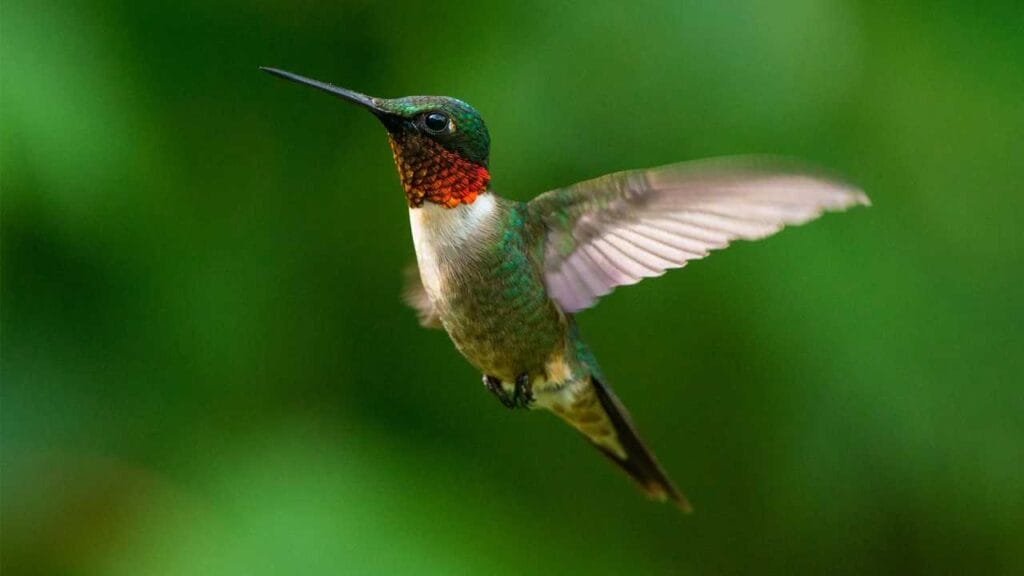
Ruby-throated-Hummingbird
These birds may remain solitary for most of the year yet become much more social during the breeding season (which typically lasts only several days). Witnessing one is truly enjoyable with its shimmering feathers catching sunlight and unique ability to hover midair – truly making this species stand out as captivating and special! These birds know as florida birds with long beaks.
| Category | Classification |
|---|---|
| Kingdom | Animalia |
| Phylum | Chordata |
| Class | Aves |
| Order | Apodiformes |
| Family | Trochilidae |
| Genus | Archilochus |
| Scientific Name | Archilochus colubris |
| Ruby-Throated Hummingbird Conservation Status | Least Concern |
| Ruby-Throated Hummingbird Locations | Central America, North America |
| Category | Information |
|---|---|
| Prey | Small insects, beetles, ants, aphids, gnats, mosquitoes, and wasps |
| Fun Fact | Ruby-throated hummingbirds can beat their wings more than 50 times per second. |
| Estimated Population Size | 7 million |
| Biggest Threat | Habitat loss |
| Most Distinctive Feature | Male’s ruby-red throat |
| Other Name(s) | Eastern hummingbird |
| Wingspan | 4 – 4.75 inches |
| Incubation Period | 11-16 days |
| Litter Size | 2 |
| Habitat | Open woodlands |
| Predators | Hawks, owls, crows, kestrels, frogs, dragonflies, spiders |
| Diet | Omnivore |
| Favorite Food | Nectar |
| Type | Bird |
| Common Name | Hummingbird |
| Number Of Species | 1 |
| Location | Eastern United States and Caribbean |
| Nesting Location | Tree or large shrub |
| Age of Molting | 12 months |
| Migratory | Yes |
| Ruby-Throated Hummingbird Physical Characteristics | |
| Color | Grey, White, Green |
| Skin Type | Feathers |
| Top Speed | 40 mph |
| Lifespan | 3-5 years |
| Weight | 0.11 ounces |
| Height | 3.5 inches |
| Length | 2.3 – 3.5 inches |
American Flamingo
American Flamingos are majestic wading birds known for their distinctive pink plumage and long, slender necks and legs. With large pink-and-white beaks adorned with black tips that curve downward, this striking bird makes a dramatic sight.
Red wing coverts and black primary and secondary flight feathers add a sophisticated accent.
One of the fascinating characteristics of American Flamingos is their feeding behaviour. These birds feature special adaptations in the upper half of their beaks that enable them to filter small organisms and algae out of water sources, and feeding with their beaks upside-down makes use of their unique physical attributes in extracting food sources for sustenance.
If you want to see these extraordinary creatures in their natural habitat, South Florida and the Florida Keys are ideal places. Their vibrant pink plumage and delicate movements will leave a lasting impression on anyone lucky enough to witness one in person. These beautiful birds get their distinct colouring from the food they consume, such as shrimp, molluscs, brine flies and brine fly larvae. Omnivorous by nature, they also enjoy eating grass seeds and algae as sources of sustenance.
One fascinating behaviour of American Flamingos is their impressive wading technique. These birds often wade through shallow waters, stirring up mud with their bills and feet in order to attract prey, providing vital foraging skills that ensure their survival in natural environments.
By the 1900s, these majestic birds had become virtually extinct in Florida. Still, thanks to conservation efforts and habitat restoration initiatives, American Flamingos have experienced an astonishing comeback, now reclaiming lost range and increasing in numbers, serving as proof that the preservation of habitats can make an enormous difference in survival rates for species such as this.
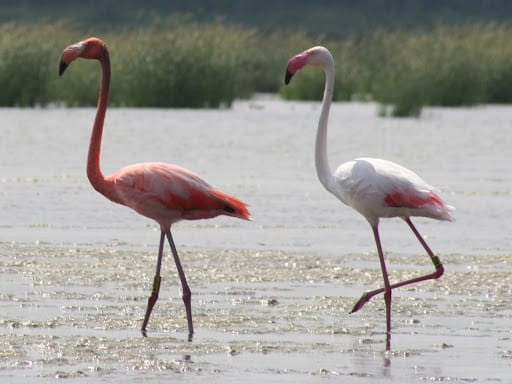
American Flamingo
The American Flamingo is not only visually stunning, but it is also an important ecological indicator. Its presence or absence can reflect on the health of wetland habitats. Let’s protect these remarkable creatures and their environments for future generations!
| Category | Classification |
|---|---|
| Kingdom | Animalia |
| Phylum | Chordata |
| Class | Aves |
| Order | Phoenicopteriformes |
| Family | Phoenicopteridae |
| Genus | Phoenicopterus |
| Flamingo Locations | Africa, Asia, Central America, Eurasia, Europe, North America, South America |
| Category | Information |
|---|---|
| Main Prey | Algae, Fish, Insects |
| Fun Fact | Sleeps on just one leg! |
| Distinctive Feature | Long, curved beak and sleep standing on one leg |
| Wingspan | 100cm – 180cm (59in – 71in) |
| Habitat | Large lakes and plantless lagoons |
| Predators | Human, Eagles, Wild dogs |
| Diet | Omnivore |
| Lifestyle | Flock |
| Favorite Food | Algae |
| Type | Bird |
| Average Clutch Size | 1 |
| Slogan | Sleeps on just one leg! |
| Flamingo Physical Characteristics | |
| Color | White, Orange, Pink |
| Skin Type | Feathers |
| Top Speed | 31 mph |
| Lifespan | 15 – 30 years |
| Weight | 2kg – 4kg (4.4lbs – 8.8lbs) |
| Height | 100cm – 150cm (39in – 59in) |
Belted Kingfisher
The Belted Kingfisher is an intriguing species of water kingfisher known for its distinctive features and incredible hunting abilities. These birds can be distinguished by their large heads with shaggy crests sitting atop them; male Belted Kingfishers sport captivating slate blue plumage with white underparts, while females feature vibrant orange patches on their bellies and flanks, making them even more eye-catching; this rare bright colouration further contributes to their unique qualities.These birds know as florida birds with long beaks.
One of the most striking characteristics of the Belted Kingfisher is its long and heavy black beak with a grey base. Measuring approximately 2 inches long and resembling daggers in shape, these beaks allow these birds to catch fish and crustaceans that make up their primary diet source.
Overall, the Belted Kingfisher is an astounding avian species that draws nature enthusiasts’ attention with its beautiful appearance and outstanding hunting techniques.
These magnificent creatures are permanent residents in Florida’s southeast corner and breed between April and July, though during winter months, some populations migrate southward into Florida.
One distinguishing characteristic of these birds is their alarm calls, which include harsh mechanical rattles and occasional screams. Furthermore, their two fused toes set them apart from other blue-winged birds.
Belted Kingfishers become highly territorial during the breeding season. Males energetically defend their territories by charging and chasing away intruders – an amazing display that highlights their strength in protecting nest sites and offspring.
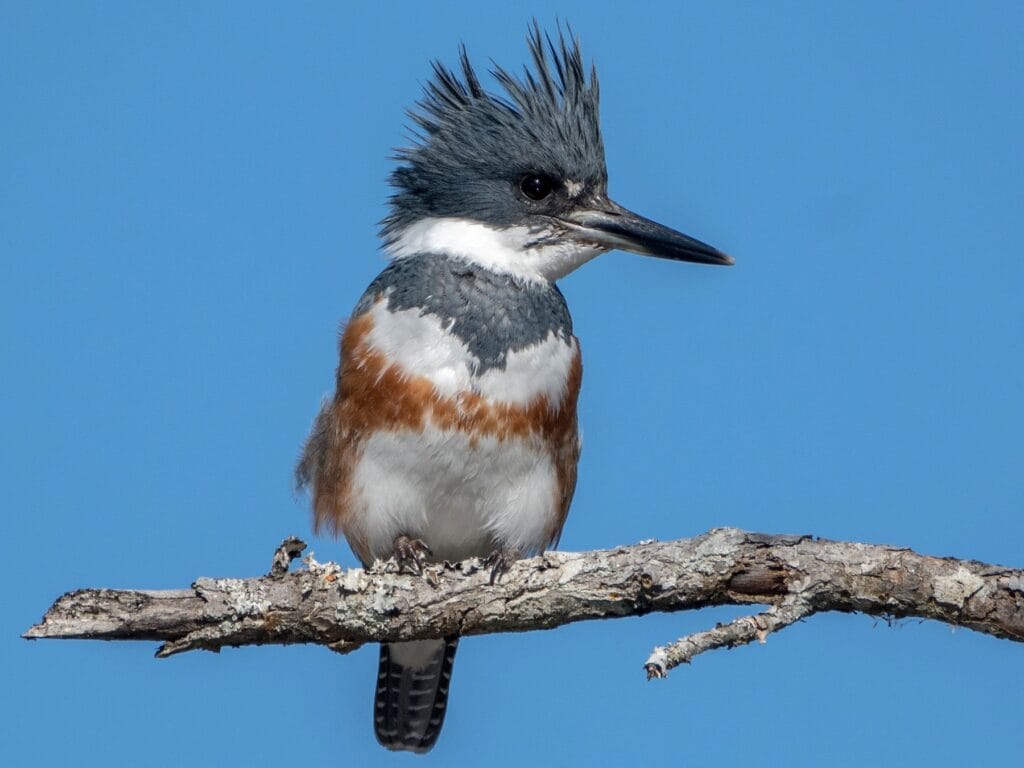
Belted Kingfisher
No matter your level of bird watching or naturalist knowledge, witnessing the Belted Kingfisher in its natural environment is sure to provide you with an amazing experience.Be on the lookout for these fascinating birds when visiting Central and Northern Florida’s spectacular landscapes. These birds know as florida birds with long beak.
| Category | Classification |
|---|---|
| Kingdom | Animalia |
| Phylum | Chordata |
| Class | Aves |
| Order | Coraciiformes |
| Family | Alcedinidae |
| Genus | Megaceryle |
| Scientific Name | M. alcyon |
| Belted Kingfisher Locations | Central America, North America |
Great black-backed Gull
The Great black-backed Gull is an exquisite bird native to Florida, boasting one of the largest wingspan in this region at up to 5 feet 7 inches and weighing over 5 pounds. These impressive birds possess white plumage on their heads, necks, and underparts for contrast against dark grey wings and backs; plus, their stunning pink legs complete their elegant appearance!
One of the most striking characteristics of the Great black-backed gull is its large and powerful beak, measuring from 2.1 to 2.85 inches long and sporting vibrant yellow or yellow-pink colouring adorned with vibrant red or orange patches on its lower mandible. These remarkable characteristics distinguish it from its fellow birds.
With its majestic presence and size, Florida’s Great black back gull is an impressive sight. Soaring through the air or perching majestically on coastlines, these birds represent grace and strength – captivating both nature enthusiasts and birdwatchers.
The Great black-backed Gull is one of the majestic and impressive bird species found along Atlantic waterfronts, often referred to as “Kings of the Atlantic waterfront”. These aggressive hunters make them skilled pirates and scavengers along its coastlines.
By virtue of their massive size and varied diet, these birds do not shy away from preying upon other nesting birds during nesting season. Their diet includes carrion, fish, molluscs, crustaceans, marine worms, insects, rodents, and even berries!
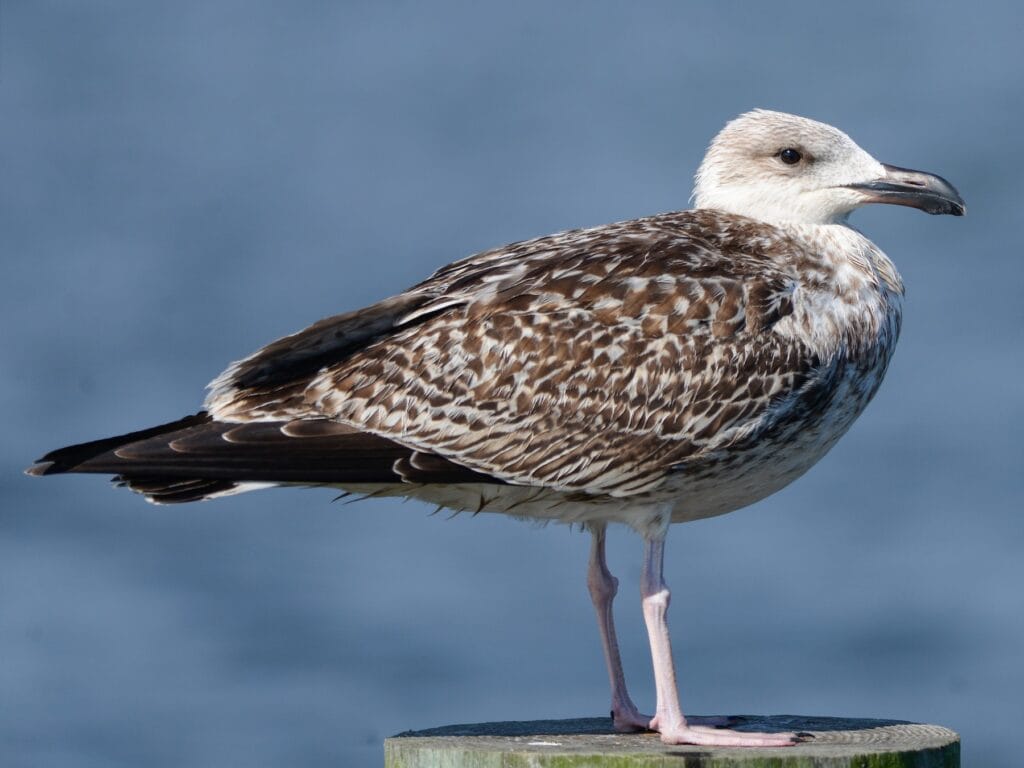
Great Black-Backed Gull
Great black-backed Gulls used to be popular hunting targets due to their feathers being highly prized in hat making. Today, however, these impressive birds continue to thrive as dominant predators in coastal habitats – drawing admiration and appreciation from bird enthusiasts and beachgoers alike. With its striking black back and powerful beak, the Great black-backed Gull is an unforgettable species and attracts the admiration and appreciation of many. These birds know as florida birds with long beaks.
Sandhill Crane
Sandhill Cranes are stunning birds known for their large size, towering height, graceful presence, long necks and legs, broad wings and unique plumage with rusty washes on their upperparts, giving them a unique appearance. Adult Sandhill cranes also possess pale cheeks, red head patches and black legs, which further distinguishes their identity.
One of the hallmark features of Sandhill Cranes is their long, dark, and pointed beak. These powerful weapons serve multiple functions, including defence against predators. Their beaks have enough force to pierce small carnivore skulls if necessary – providing effective protection. Sandhill cranes inhabit diverse habitats, from wetlands and grasslands to agricultural fields.
Cranes are known for being highly migratory birds that cover thousands of miles each year during their annual migrations. Famed for their intricate courtship dances, it is fascinating to witness these cranes in their natural environments.
Sandhill cranes have long been admired due to their stunning beauty and vital role in ecosystems; therefore, they have gained great favour with bird enthusiasts, nature lovers, and photographers worldwide.
Florida is home to two subspecies of Sandhill Cranes: the Greater Sandhill Crane and the Florida Sandhill Crane. While Greater Sandhill Cranes migrate south for winter refuge, Florida Sandhill Cranes remain year-round residents in northeastern parts of the peninsula.
Sandhill Cranes are known for their social nature and can often be found in pairs or family groups throughout the year. These medium-sized birds possess long necks and legs with predominantly grey plumage. Furthermore, Sandhill Cranes boast an audible call that can be heard over long distances.
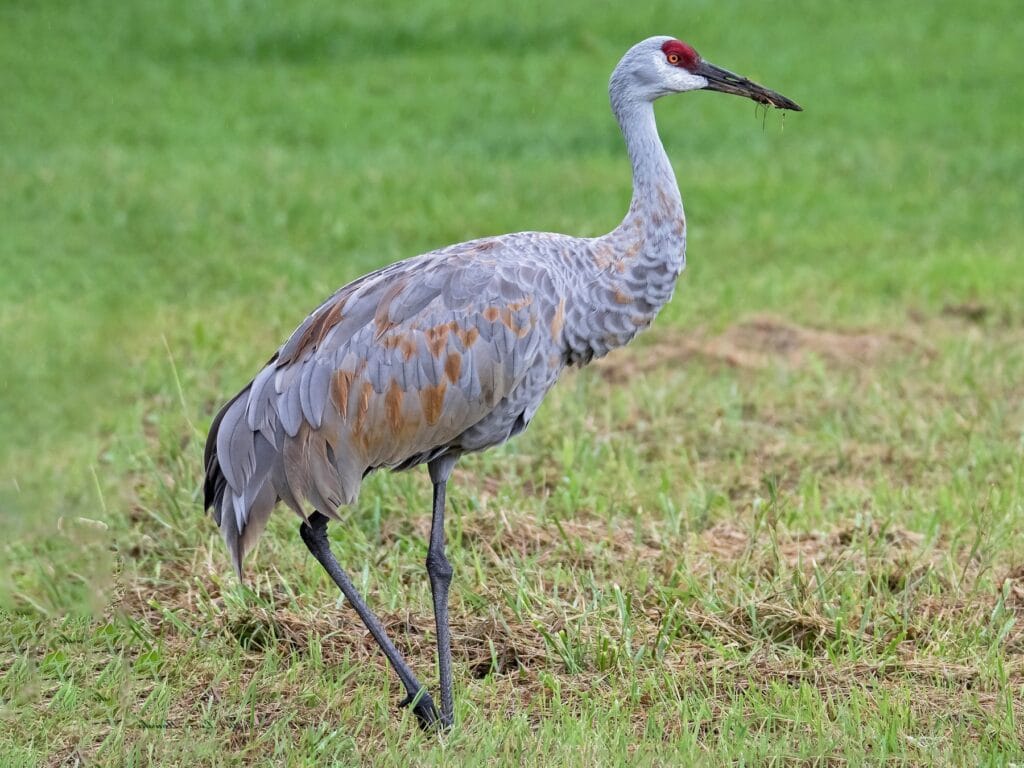
Sandhill Crane
Sandhill Cranes are well known for their elaborate mating dances during courtship. This display includes leaping, running and flapping their wings in intricate displays of jumping, running and flapping.Sandhill Cranes play an integral part in maintaining wetland habitats and seed dispersion, and nature enthusiasts and birdwatchers treasure them. Their sight is always captivating and valued. These birds know as florida birds with long beak.
| Category | Classification |
|---|---|
| Kingdom | Animalia |
| Phylum | Chordata |
| Class | Aves |
| Order | Gruiformes |
| Family | Gruidae |
| Genus | Antigone |
| Scientific Name | A. canadensis |
| Sandhill Crane Locations | Central America, Eurasia, North America |
| Category | Information |
|---|---|
| Prey | Occasional small mammals |
| Name Of Young | Fledglings |
| Group Behavior | Family units |
| Flock | Yes |
| Biggest Threat | Habitat Loss, Predation |
| Wingspan | 5’5″ to 7’7″ |
| Incubation Period | 30 days |
| Age Of Independence | 10-12 months |
| Age Of Fledgling | 30 days |
| Average Spawn Size | 1-3 |
| Habitat | Marshes and Bogs |
| Predators | Most predatory mammals |
| Diet | Herbivore |
| Lifestyle | Flock |
| Nesting Location | Marshes, shallow water |
| Sandhill Crane Physical Characteristics | |
| Color | Brown, Grey, Fawn, Red |
| Lifespan | 20 years or more |
| Weight | 7.1-11 pounds |
| Height | 3-4 ft |
| Age of Sexual Maturity | 2 years |
| Venomous | No |
| Aggression | Low |
King Rail
King Rails are North America’s largest rail species and are roughly the size of chickens. Characterized by small heads, fairly long necks, short tails and long legs – King Rails possess distinctive physical traits that set them apart from their peers.
These birds feature brown backs with rusty brown faces and breasts. A distinguishing feature is the dark brown cap on top of their heads; long, slightly curved orange-brown beaks measuring between 2.3 and 2.6 inches help these birds locate food sources.
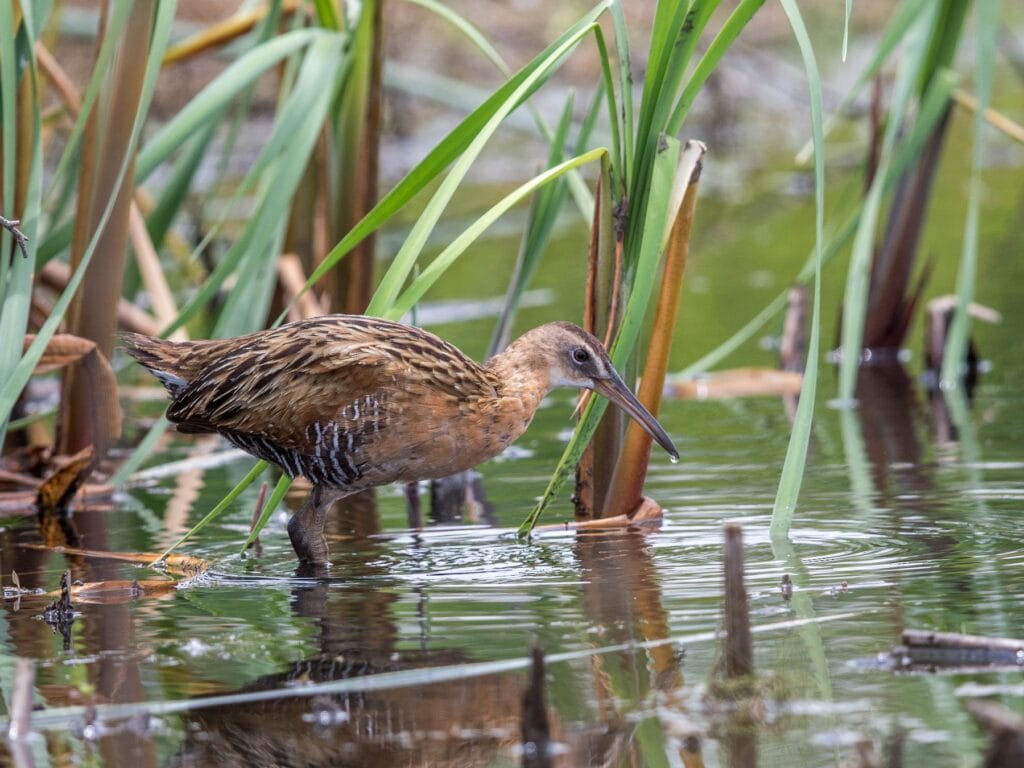
King Rail
King Rails are longstanding residents of Florida’s freshwater marshes and can be observed year-round. Their large size and distinct appearance make them fascinating creatures to observe in nature.
Anhinga
Anhingas are large and slender waterbirds belonging to the family Anhingidae. Additionally known as snakebirds, darters or water turkeys, these remarkable birds can typically be found in warmer regions across North and South America.
Anhingas can easily be identified by their distinctive black plumage, which features white spots on their wings and back. While female anhingas share similar characteristics, their brownish necks and heads help differentiate them.
One of the most remarkable characteristics of anhinga birds is their unique swimming technique. While underwater, only their long, slender necks appear above the water’s surface, resembling snakelike bodies, thus giving rise to their name “snakebirds.”
Anhingas are accomplished divers and swimmers, using their webbed feet and long, pointed bills to catch fish and other aquatic prey.
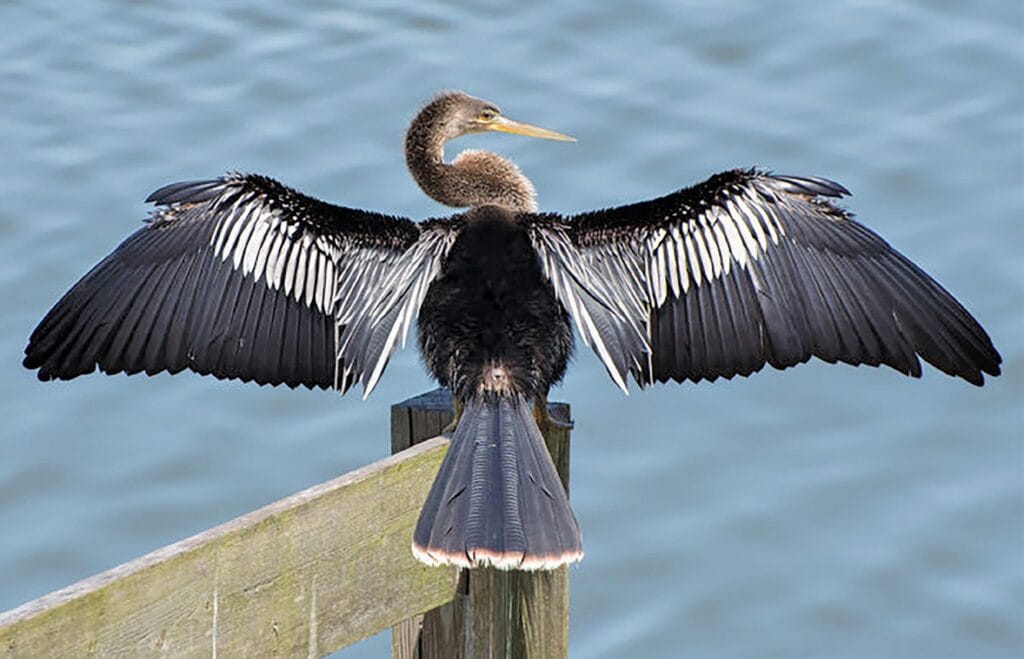
Anhinga
Anhingas are famously recognized for their extraordinary fish-spearing abilities, making them a magnificent sight in their natural environment. Furthermore, their remarkable adaptations and beautiful appearance make them an important component of the avian kingdom. These birds know as florida birds with long beaks.
| Category | Information |
|---|---|
| Prey | Fish, amphibians, crawfish, shrimp, crabs |
| Main Prey | Fish |
| Group Behavior | Colonial Nesting |
| Fun Fact | Their name means snake bird |
| Estimated Population Size | 2,000,000 |
| Biggest Threat | Loss of habitat |
| Most Distinctive Feature | Long S-shaped neck |
| Distinctive Feature | Sharp, yellow bill |
| Other Name(s) | Snakebird, American darter, or water turkey |
| Wingspan | 3.7 feet |
| Incubation Period | 26 to 30 days |
| Age Of Fledgling | 6 weeks |
| Habitat | Wetlands, marshes, and estuaries |
| Predators | Hawks, crocodiles, alligators |
| Diet | Carnivore |
| Lifestyle | Colony |
| Pair | Yes |
| Number Of Species | 2 |
| Location | North America, South America |
| Average Clutch Size | 5 |
| Nesting Location | Trees near or above water |
| Migratory | Yes |
| Anhinga Physical Characteristics | |
| Color | Brown, Yellow, Black, White, Dark Brown, Chestnut, Multi-colored, Black-Brown |
| Skin Type | Feathers |
| Venomous | No |
FAQ
What are the Characteristics of florida Birds with Long Beaks?
Florida birds with long beaks feature distinguishing physical features that differentiate them from other bird species. The White Ibis stands out among wading birds due to its long bill and graceful neck; Wood Storks stand out with their long legs and white plumage, making them striking sights in Florida bird populations; finally, White Pelicans with their large bodies and long bills are another iconic species known for their striking appearances.
Where Can You Find Florida Birds with Long Beaks?
Birdwatchers in Florida can explore various habitats to spot florida birds with long beaks, such as the American White Pelican along the Florida coastline during winter, Blue Herons in marshes, swamps, and coastal areas, or Great Egrets which frequent wetland areas or freshwater habitats.
How to Identify florida Birds with Long Beaks in Florida?
Identification of florida birds with long beaks in Florida requires a keen understanding of their characteristics. For instance, American White Ibises can be identified by their long, curved bill and overall white plumage; Brown Pelicans, with their distinctive black bill and long necks, can be easily noticed; finally, the Florida scrub jay stands out with its unique features and behaviour.
Why Do Birds Have Long Beaks?
Long beaks in birds provide them with a distinct advantage in both feeding behaviour and evolutionary significance, making for more efficient foraging for food, such as small fish or aquatic prey, within their natural environments – this evolutionary adaptation has ensured the survival of many bird species across Florida and beyond.
What is a red black and white bird with a long beak?
Oystercatchers are hard to miss. Large black-and-white wading birds with long, orange-red bills and reddish-pink legs make for striking specimens.
What is the white bird with a long black beak in Australia?
Since centuries ago, ibis birds have been revered by Indigenous communities and serve as excellent indicators of wetland health. The Australian White Ibis can be identified by its predominantly white plumage with featherless black heads, necks, legs and bill, which has a downcurved tip.
What is a large white bird with a long beak?
The Great Egret is a large, long-necked, wading bird with pure white plumage that features long-necked legs and long legs, featuring yellow bill, dark legs and feet as well as longish plumes that drape from its tail but do not extend past its head during breeding plumage. Adult birds display longish plumes extending from their tail but not from their heads during mating season.
What is a white Florida bird with a long orange beak?
Further Reading
You may also check out:
Thank you for reading!




